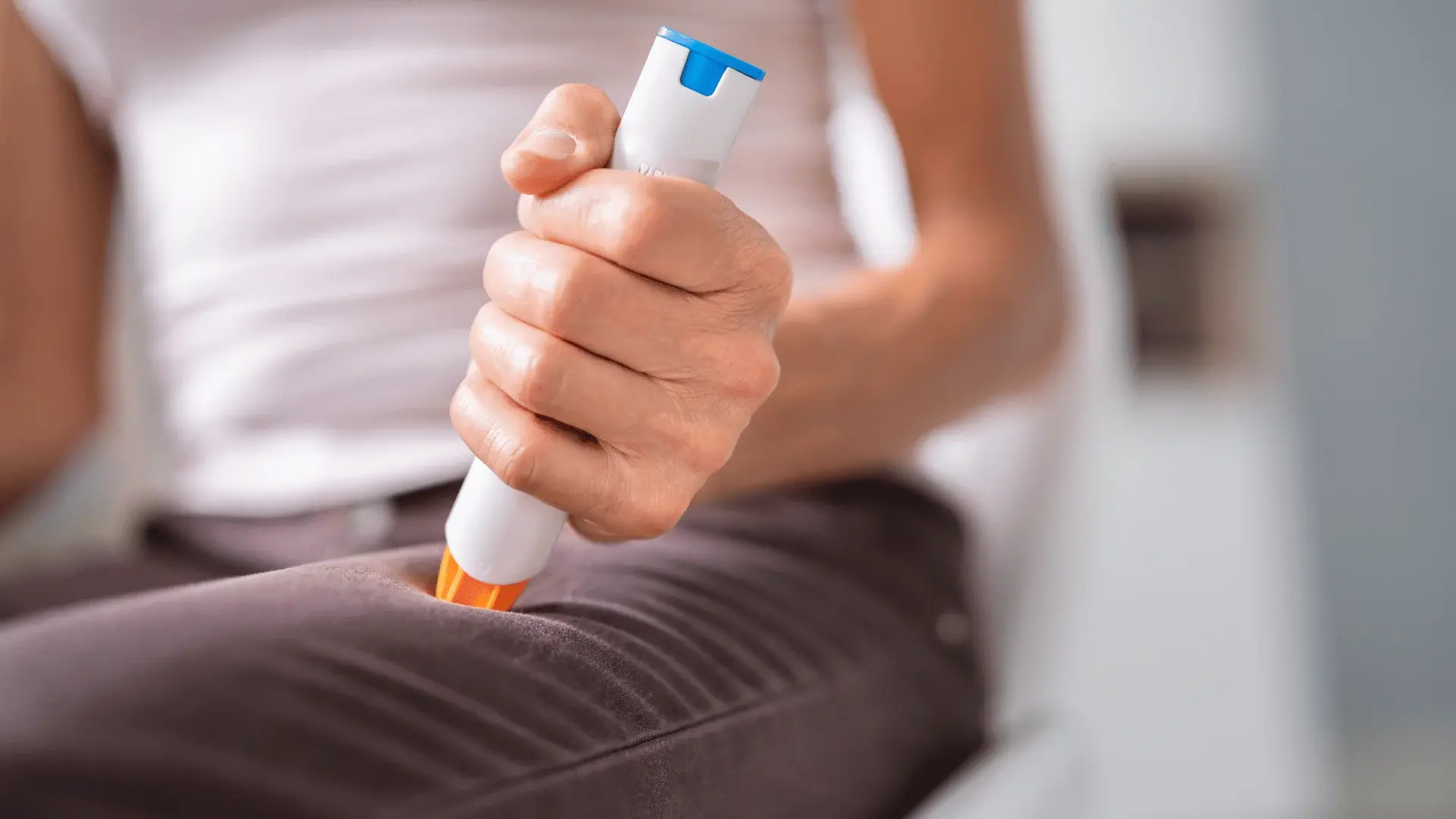Severe Allergic Reactions (Anaphylaxis): Acting Fast Could Save a Life

A tiny exposure can trigger a very big reaction. A peanut in a cookie, a bee sting, a new medication, and minutes later breathing is tight, hives are spreading, and panic is building. That is anaphylaxis, a severe allergic reaction that needs immediate action. Here is a clear, calm plan.
Warning Signs of Anaphylaxis
- Swelling of lips, tongue, or throat
- Difficulty breathing, wheeze, tight chest
- Dizziness or fainting, feeling weak
- Rapid heartbeat
- Hives or rash spreading beyond the exposure site
- Nausea, vomiting, or abdominal pain
Symptoms usually begin within minutes, sometimes after 30 minutes or more. Treat this as an emergency the moment you suspect it.
Step 1, Call 911 Immediately
- Say, “suspected anaphylaxis” and give your exact location.
- Put the phone on speaker, follow dispatcher instructions, stay on the line.
Step 2, Use Epinephrine Right Away
If an EpiPen or other epinephrine auto injector is available, use it now.
- Inject into the outer mid thigh, through clothing if needed.
- Hold for the time on the device label, usually a few seconds, then remove.
- Massage the site gently for several seconds.
- If symptoms are not improving and help has not arrived, a second dose may be given after 5 to 15 minutes, follow device or clinician instructions.
Epinephrine is the first line treatment, it opens airways and supports blood pressure. Do not delay it for antihistamines or inhalers.
Step 3, Position for Breathing and Blood Flow
- Lie the person flat with legs raised to improve circulation.
- If breathing is easier while seated, allow a comfortable upright position.
- If vomiting or drooling, place on their side to protect the airway.
Step 4, Start CPR if There Is No Normal Breathing
- If unresponsive and not breathing normally, begin CPR and continue until responders take over.
- Use an AED as soon as it is available, follow voice prompts.
Helpful Extras, Only After Epinephrine
- Antihistamines can ease hives and itching, they do not treat airway or blood pressure problems.
- Inhalers can help if the person has asthma, they do not replace epinephrine.
- Monitor continuously, anaphylaxis can return, this is called a biphasic reaction.
Prevention, Living Prepared With Severe Allergies
- Carry epinephrine at all times, check expiration and device training dates.
- Wear medical alert ID for rapid recognition by responders.
- Read labels for foods, medicines, and personal products.
- Tell people at school, work, and social events what to do, and where your auto injector is kept.
- Practice with a trainer device so you and your helpers are confident.
Pocket Checklist
- Recognize symptoms quickly.
- Call 911 immediately.
- Use epinephrine without delay, consider a second dose if needed.
- Position for breathing and circulation, flat with legs up, side if vomiting.
- Start CPR if no normal breathing.
- Go to the emergency department for observation, even if symptoms improve.
Disclaimer, This guide is for general education and is not a substitute for professional medical advice. In an emergency, call 911.
References
- Centers for Disease Control and Prevention (CDC), Recognizing and Responding to Anaphylaxis
- CDC, Management of Anaphylaxis at Vaccination Sites
- U.S. Food and Drug Administration (FDA), Epinephrine Injection, Auto Injector, Prescribing Information




